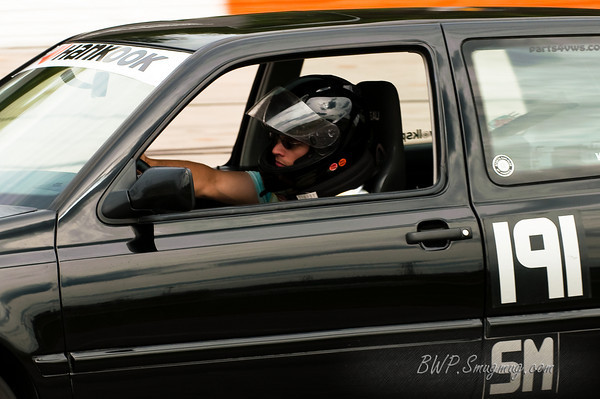Every year I post up facts and figures and try to persuade people to buy winter tires. This time, I wrote up a quick and very basic explanation on the differences between Summer, All season, and winter tires.
Pictured from left to right: All Season, Summer, Winter
It is a complete over-simplification but the two biggest factors in tires come down to tread pattern design and rubber compound.
First the Summer tire (middle). It has the largest blocks (less void area (the gaps in the tread)) and no sipping (the paper thin cuts in the tread blocks). This tire is maximized for high speed stability and cornering, the more rubber it has in contact with the road the more traction it has. The larger the blocks of tread the less squirmy the car feels. The tread pattern has kind of a swept back pattern to expel water away from the direction of travel and out. The type of rubber used on this tire is made to stand up to higher temperatures and provide more traction at higher temps. Conversely this rubber compound turns into the equivalent of hockey pucks below 35 degrees which can make things dangerous when cold.
Next the winter tire (right). It has large amount of void area between the blocks of tread, and their is more of them. These work kinda like shovels or paddles to pull one through the snow and slush. Look closely at the tread blocks, take notice of all those very thin cuts. Those are called sipping. They allow the tread block to flex, bend, and be more pliable on cold, snowy, and icy surfaces. The rubber compound is specifically designed to remain very soft in cold temperatures. Conversely, in the hot summer months the tire is way beyond it's design, wears really quickly and feel like driving on marshmallows.
Lastly, the All-Season tire, or as I call it, the no-season tire. It is a compromise between summer and winter. It has some sipping in the tread blocks. There is balance between tread blocks and void area. The compound tries it's best to work in both the cold and hot, but falls short. It is a tire that works great at nothing, but does "ok" at everything. It is the Swiss army knife of tires. A Swiss Army knife t isn't very good as a screw driver, nor is it very good at cutting a nice juicy steak; but it does do the job.
So does one need multiple sets of tires? I don't know, does one need 6 pairs of shoes? I mean you don't wear the same pair of sneakers though the snow, to a wedding, and to play sports ball do you?











